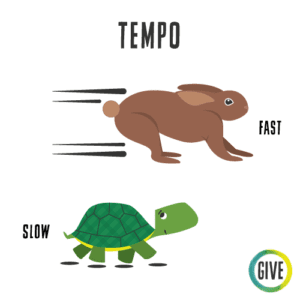Exploring Movement Opposites
Contributed by Amanda Newman
![]()
Description
This activity will introduce and explore the concept of opposites through movement.
Directions
- Introduce the activity at the front of the class or in the center of a circle.
- Introduce the concept of opposites. Source the definition from students.
- Offer a few terms such as fast, high, and big. The example terms could also come from stories or concepts they are covering in class; they can be simple or complex. Ask students to help name the opposites. It may be useful to chart these on the wall or have visual vocabulary displayed.
- Explain that in this activity the students will do the opposite of the leader (e.g. “When I go fast, how do you go? SLOW!”).
- Start moving at one speed and encourage students to move at the opposite.
- Once all students are with you, switch and wait for students to respond. Repeat.
- As students strengthen their ability to respond to changes, vary the amount of time you spend at one speed before switching to the other. Repeat the process with levels—high and low.
- Variations on the activity:
- This activity can be done with one leader and the group following or with students working in partners. In partners, it may be helpful to identify a leading partner and a following partner before switching.
- Additional rounds can be created with other crowdsourced opposites from students such as big and small, smooth and sharp, etc.).
- For more complexity, the challenge of the activity can be increased by:
- Introducing the concept of layering opposites (leader or partner moves slow and high; group or partner responds by moving fast and low).
- Traveling across the floor while navigating opposites with your partner.
- Removing the roles of leading and following in partners and instead challenging students to respond no matter who changes the speed, level, etc.
Transition into Activity
Give instructions for students to follow you exactly to move to the space they’ll be in for the activity. Congratulate them for following instructions so closely then tell them in this next activity they’ll do the opposite of what you do.
Transition out of Activity
Ask students to pick their favorite way to move out of the concepts you worked with to safely travel back to their desk or chair, watching out for their neighbor.
Classroom Arrangement
The activity can be adapted to the space and student needs. Ideally students will have room to move freely. This activity can also be done at desks or in chairs. If at desks, ask students to organize their space to move anything that may be in their way.
Supports/Adaptive Materials/Tools
- Visual vocabulary cards may help in identifying and visualizing opposites.
- The activity can be scaled in many ways such as turning into a hand dance done seated.
- Consider narrating the movement at times or throughout, labeling both how the leader is moving and how the group is responding.
Possible Roles for Classroom Professionals
- Classroom professionals can partner up with students needing support, helping to narrate, prompt, or model. This can happen in the leader and group structure or as a third person in a partnership.
- Classroom professionals might also assist in using visual vocabulary or pointing to written words on the wall.
Adjustments for Remote Instruction
![]()
This activity will work best in the leader and group structure for remote learning. Narration and use of written labels or visual vocabulary will also be helpful. Another opposite example that could be introduced in remote settings is near (to the screen) and far (from the screen). For asynchronous learning, instructions and a demo video could support students in doing the activity with a caregiver or sibling at home.


